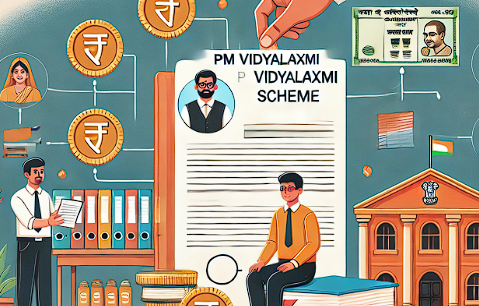PM Vidyalaxmi Scheme Implementation Challenges
The PM Vidyalaxmi scheme was launched to support meritorious students in India. This initiative aims to provide financial assistance for higher education through collateral-free loans. Despite its noble intentions, the scheme has faced challenges in its implementation. Public sector banks have reported technical issues and a slow uptake of applications. As of April 2025, percentage of applications remain pending.
About PM Vidyalaxmi Scheme
Launched in November 2024, the PM Vidyalaxmi scheme aims to ease financial barriers for students pursuing higher education. It offers education loans without collateral or guarantors. The government provides credit guarantees for loans up to ₹7.5 lakhs, covering 75% of the outstanding amount.
Eligibility Criteria
Students from families with an annual income of up to ₹8 lakhs can apply for the scheme. They are eligible for a 3% interest subvention on loans up to ₹10 lakhs. Additionally, students from families earning up to ₹4.5 lakhs receive full interest subvention under the PM-USP scheme.
Application Process
The application process is designed to be simple and digital. Students apply through a unified portal. However, issues such as server errors and data migration problems have hindered the process. These technical glitches have resulted in a backlog of applications.
Government Initiatives
The finance ministry has urged public sector banks to launch awareness campaigns. This aims to improve outreach and encourage more students to apply. Banks are also advised to allow students to rectify minor errors in their applications, reducing rejection rates.
Financial Outlay and Benefits
The government has allocated ₹3,600 crores for the scheme from 2024 to 2031. It aims to benefit around 7 lakh students annually through interest subvention. Students from government institutions pursuing technical or professional courses will receive preference.
Integration with Existing Schemes
PM Vidyalaxmi complements existing initiatives like the Central Sector Interest Subsidy (CSIS) and the Credit Guarantee Fund Scheme for Education Loans (CGFSEL). Together, these schemes aim to provide comprehensive support for students seeking higher education.
Future Prospects
The scheme is expected to evolve with annual updates based on the National Institutional Ranking Framework (NIRF). As more institutions are recognised, the number of students eligible for loans will increase, further enhancing access to quality education.
Month: Current Affairs - April, 2025
Category: Government Schemes Current Affairs







